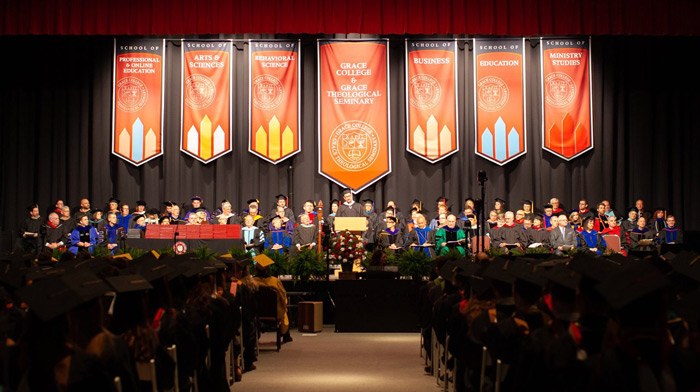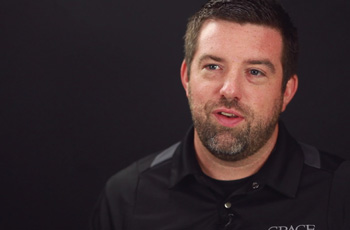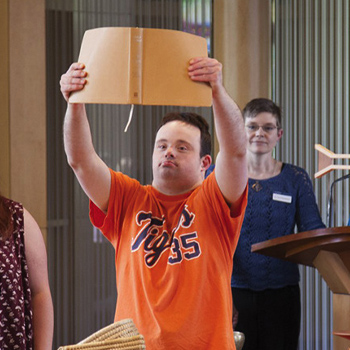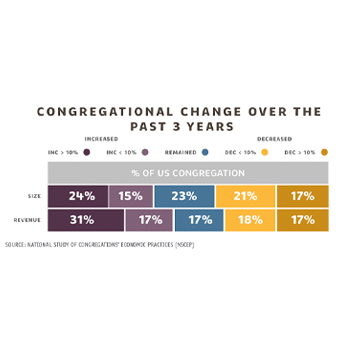
Competency-based education (CBE) — an approach to education that allows students to advance based on their ability to master skills or competencies regardless of time, place, or pace of learning — has been gaining popularity across a variety of educational settings and is one of the fastest-growing educational trends in North America.
Competency-based theological education (CBTE) applies the principles of CBE to a ministry setting, where character traits and qualities and other personality-related “soft” competencies are just as important to a seminarian’s success in a vocation or ministry role as academic knowledge, skills, and abilities. CBTE has dramatically changed how some seminaries are educating students and presents radical challenges to conventional ways of thinking about ministry preparation and methods of education delivery.
Some schools have gone “full CBTE,” while others are experimenting with just one program (typically the M.Div.), and of course, some schools are not employing CBTE at all. Wherever schools are in their CBTE journey, the impact of this philosophy of teaching and learning is being felt throughout institutions of higher education. It is also making an impact on conventional educational programs, sometimes by encouraging teachers to give more creative assignments that emphasize content mastery, or by tweaking how they teach and think about fieldwork for their students. And as more and more theological institutions pay attention, the impact grows even broader.
In this issue of In Trust, and in the upcoming summer issue, we will be presenting profiles of some of the schools that have been pioneers of CBTE. In this issue, we focus on Grace College and Seminary in Indiana and Horizon College and Seminary in Saskatchewan. These two schools, like the others that have or are in the process of implementing CBTE practices, should be considered cousins, not identical twins. “There are commonalities, but significant distinctions,” among different CBTE programs, says Kent Anderson, president of Northwest Baptist Seminary in British Columbia, also a pioneer of CBTE. The commonalities are easier to define than the differences because they are the components that form the core of the CBE movement. Some of these commonalities are:
- Education is accessible. Students usually do not have to live on campus or even attend classes there. Instead, most education takes place online, or in a blended learning setting.
- Education is contextual and integrated. It is relevant to the student’s current or future vocation or ministry, with students applying what they learn to their own communities, churches, and jobs. Learning and practice are inseparable.
- Educators are companions. The role of faculty shifts from that of experts who impart knowledge to guides who walk alongside students.
- Learning is individualized and student directed. Learning takes place at each student’s own pace and allows them to advance based on their ability to master a skill or competency.
- Mentors are a critical part of the program. Faculty members, pastors, field education supervisors, and other ministry leaders, who often work in small teams assigned to each student, work closely with students and interact with them in the student’s context.
That CBTE programs typically include these components does not mean that switching to a CBTE approach requires making a radical shift from conventional educational goals and methods. “You can have traditional-feeling CBTE programs,” says Greg Henson, president of Sioux Falls Seminary. “The way it looks and the way it is lived out can shift in lots of different ways.” Indeed, the schools that use CBTE have shaped it to fit their needs, the needs of their students, and to fit within their own contexts, and most are still tweaking it.
Some of the differences in the ways schools practice CBTE often relate to the following components:
- Student mentors. Their role, who is part of the mentor teams, and how these teams function.
- Tuition. How and how much students pay for the program.
- Courses and credits. Whether there are actual courses, and if so, what they look like, and if students must complete courses to earn credit for them.
- Assessment. How a student’s mastery of competencies is evaluated, and also how prior knowledge, skills, and aptitudes are measured. (Students can often leverage what they already know to complete familiar work tasks more quickly.)
- Competencies. The number of competencies required and how they are defined.
- On-campus attendance. Whether students must physically attend classes at the school, and if so, how often.
- Role of denominations/churches. How students and schools collaborate with congregations, denominations, employers, and other “sending agencies” in the program.
What follows is a snapshot of two schools that have implemented CBTE and a glimpse at the unique contribution each is making to the broader discussion of this approach to learning in North America. In Trust set out to listen and learn from these schools about what they believe is most important to share about their journey and where they have landed. “We don’t have the opportunity to sit back and say, ‘This is how we’ve always done it,’” says John Lillis, provost of Grace Seminary. “CBTE doesn’t allow you to get comfortable. It forces you to get better.”
Together these case studies tell a much bigger story about how churches and seminaries coexist, about the deeply challenged and changing world of the seminary today, and how some schools have turned their world upside down to respond to the change.
Grace College and Seminary
Winona Lake, Indiana
 |
“We are building the airplane as we are flying it,” explains John Lillis, provost of Grace College and Seminary, of his school’s CBTE program which is called “Deploy,” a program that delivers a seminary education online and within a ministry context at each student’s local church.
In 2018, after four years of planning a CBTE model for the M.Div. and M.A. programs, the seminary welcomed its first CBTE student into the program.
During the planning process, three diverse groups of pastors identified the 18 competencies they considered essential for Deploy students to master, and then faculty members designed the learning resources and evaluation processes for these competencies. “We locked the faculty into a room for two weeks, and they developed those competencies. The faculty are all in because they designed it,” says Lillis.
Faculty members also play a pivotal role in the mentoring program. At Grace, each student has a team of three mentors, headed by a faculty member. “The faculty person functions as a coach, as a mentor,” explains Gabe Tribbett, associate director of Deploy, and the other two are a ministry mentor and a formation mentor.
“The model is not unlike the European model of graduate study, where the instructor coaches … rather than being in class so many hours a week. There is one-on-one coaching through different mediums — phone calls, emails, video conferences.” Faculty mentors may switch during the program depending on the particular competency the student is working on. The other two mentors do not change, remaining with the same student throughout the program.
“Students meet with their mentors on average four hours a month,” says Tribbett. “It is a time investment. They are discussing assignments, but also their spiritual journey: ‘How has God shaped you? How are you navigating ministry landmines?’” The goal, Tribbett says, is for students to develop a “close intimacy with a mentor where they can talk openly, get counsel, be assessed. It is a very one-on-one situation.”
The two church-based mentors provide input on the assessments of most of the competencies, even the more academic ones. Tribbett shares a story of a student who aced his academic work, but one of his mentor teams was not convinced the student had sufficiently learned the material. “The formation mentor said: ‘He understands it but he’s not applying it in his own life or at the church.’” The mentors met with the student and created a “growth plan” so that “within six months that student would hit certain benchmarks.” They told the student that they would not declare him proficient until he could demonstrate both his knowledge of the material and his ability to put that knowledge into practice.
This emphasis on the practical application of learned material applies to biblical languages as well. Tribbett says the pastors of the seminary’s sponsoring churches insisted that biblical languages be included in the student competencies. “That reflects our tradition and history. Grace has always emphasized the languages. That’s one biggie that sets us apart.” Students must learn to use biblical languages in the context of ministry. “They are constantly taking what they are learning and applying it,” says Lillis. “They are going to have to show they know how to use the language. As they move toward mastery, it will be to prepare a series of lessons on this particular text, exegeting the Greek or Hebrew in a correct context, and bringing it to their ministry context.” Not surprisingly, gaining competency in biblical languages can take students a year or more.
A spiritual formation competency “feels very different from a language one,” Tribbett says. “They all feel different. They all require a lot of work and investment. Some are going to resonate with your personal interest more than others. We had one student reach the ‘Embrace of Sanctification’ competency in three weeks. For others, it takes three months.”
 |
| Gabe Tribbett |
What is the financial formula that can accommodate such a disparity between students in the time it takes to master a competency? It is a subscription model, which Lillis says is another example of the deep partnership paradigm that exists at Grace.
Tuition costs $750 a month, no matter how many competencies a student is working on, for however long it takes. It’s an all-you-can-learn model, explains Tribbett.
Grace provides a $250 scholarship for each student and encourages the congregation in which the student works to match that, leaving $250 a month for the student to pay. “A distinction for us is our partnership model, and that includes the financial model,” says Lillis. “It means everyone has a buy-in, and it minimizes student loan debt. We ask the student to throw in a third, the church a third, and the school a third. We raise scholarship dollars. We see our program as partnership on so many levels — the design, the evaluation, the provision of mentors, and also on the financial end.”
Lillis adds, “What I love is we are partnering with the churches in a very meaningful way, delivering education that is robust but relevant. Students are graduating with a good education, but also with experience. They have had three to five years of hands-on ministry experience,” by the time they graduate.
The seminary considers that churches are the main partner and the principal beneficiary of the Deploy program. “Our key recruiting focus is congregations,” says Tribbett. “We meet with churches and market to churches, rather than individual students.” In the beginning, they attempted to market to individuals, but that emphasis did not bear fruit. “We had 200 inquiries and may have had one student as a result. So, we market to the church.”
Tribbett says they have yet to meet a church leader who doesn’t think Deploy, or the idea of a program like it, is a great idea. “Most large churches already have a development model, so they want to know how [our program and its graduates] will fit what they are already doing. We can respond and customize certain parts of it to fit their context. A handful of our churches are so large they already have some kind of internship program where students are paid, but what they don’t have is a master’s degree with formal accreditation,” Tribbett says.
When John Lillis first heard about CBTE, he said, “This is what I’ve been waiting for.” Now he is hearing that echoed back to him. “People say, ‘Someone has finally come up with a model I’m looking for.’”
Lillis notes that hesitancy about the program comes not from pastors but from potential students. “It’s the students who say, ‘That’s not really seminary.’ But once they get into it, after one or two competencies, they are convinced. It’s convincing people there are other ways to learn.”
And those faculty who worked to get that CBTE airplane off the ground at the very beginning? They worked for six hours a day to create the program, says Lillis, and then had to work at becoming a new kind of teacher. Grace still offers traditional programs, but the Deploy team is noticing that a competency-based approach to teaching and learning is even seeping into those programs. “Deploy is not the ugly stepsister,” says Lillis. “It’s a different delivery system and there are distinctions, but competency-related impulses are being added to other programs. We see things we can integrate to make our more residential program better. Deploy is resurrecting the seminary, so to speak.”
Horizon College and Seminary
Saskatoon, Saskatchewan
 |
It all began with the ending. “What is the outcome you are looking for?” was the question leaders at Horizon College and Seminary posed to pastors, missionaries, and leaders in the business world when they began to mold their undergraduate courses into a competency-based model.
“They shared what they would need to see coming out [of a school] — to know that a person was prepared for service in the church or mission field,” says Horizon president Jeromey Martini. “They gave us a lot of data and we structured our program around that. It’s all about starting with the end in mind.” This input helped form the courses that today shape their graduates, which at Horizon primarily means undergraduates. (It is the first college in Canada to offer undergraduate competency-based Christian leadership training.)
Horizon’s competency-based curriculum focuses on six areas: leadership and administration, biblical and theological literacy, ministry development, skilled communication, spiritual maturity, and contextual awareness. The shift from a traditional Bible college model to CBTE began in 2015. “What distinguishes us is we focus on undergraduates,” Martini says, which is “a different ball game” than teaching older students who are more focused on vocational ministry.
CBE usually begins with assessing what the student already knows and the skills they possess from the experiences they have already lived, but that assumption goes out the window for undergraduates who enter without a storehouse of ministry or other practical experience. “Eight months ago, they were in Mrs. Henderson’s grade 12 English class,” says Martini. “They need structure.”
Horizon learned this lesson the costly way: They decided to allow students in the first CBTE graduating class to take as long as they needed to complete the program. “In hindsight, we should have done things differently,” says Martini. “We bought into the idea of ‘no time limits’ and measuring competency, not seat time. We went with that ideal of not measuring time, and no deadlines on anything.”
 |
| Jeromey Martini |
Martini estimates that the school lost more than $60,000 on tuition as a result of this decision. “Students who had registered for courses in the first term were taking nothing in the fourth term because they were still working on the first semester,” he says. “These students didn’t finish. That was a very expensive lesson in what not to do when launching a CBTE program.”
“Part of CBTE philosophy is ‘learning is fixed but time is fluid.’ That sounds great, but it is totally not practical, particularly for young adults,” says Leanne Bellamy, an instructor and academic coach at Horizon. “We have been really consciously working on how to allow for the flexibility that CBTE promises, but also to retain good, flexible structures — that scaffolding to support students. You need structure to write, to learn. I do think that is probably unique with us, recognizing that especially because they are undergrads, we can’t just turn these guys loose,” she says.
Bellamy, who teaches communication, says the process of introducing and acclimating students to CBTE is a bit like teaching them how to write poetry. “Don’t start them with free verse when they need to start with a sonnet,” she says. Sonnets require discipline, direction, and a definable common form, despite each one being different in the end. Allowing total self-direction did not work at Horizon; its CBTE program had be appropriate to the age and experience of its students.
To find the solution, Horizon asked its students what they needed to succeed, and the answer was, indeed, more structure. To further inform themselves, leadership also examined other CBE programs, including the one at the nearby College of Medicine at the University of Saskatchewan. “You can’t be in medicine and not demonstrate progression,” says Martini. They also looked at a CBE model at a K–12 school that provides more structure for its young students. “We took cues from other disciplines and age groups and have come up with ways to still honor flexibility in time and opportunities for revision.” The resulting program at Horizon is a blend of classroom learning and competency-style teaching and assignments, along with what the pedagogy is best known for — immersing students into real-life situations and ministry contexts to help them develop into competent Christian leaders.
Each academic year is divided into four terms, with the last week of each term reserved for “revision week.” Nothing happens during that week except “revision of work that hasn’t yet met competency,” explains Martini. “We structured that in. We’re not doing only direct assessment — that’s only a portion. We can demonstrate the formative element. We sidestepped some of those problems that come with that side of CBTE. With the direct assessment approach, so much of it is self-directed.”
 |
| Leanne Bellamy |
“One of the things that sets us apart is we still retain an aspect of the positives of a liberal arts [education],” adds Bellamy. “It’s not only about practical application in the field, but there is also an understanding that you need to develop those critical thinking skills, that knowledge base we think of as part of the traditional system, but then always being able to transfer those skills in the real world. My sense is this sets us apart, almost straddling those two worlds.”
Horizon’s innovative approach to CBTE has attracted the attention of other denominations, something its leadership team pursued intentionally. After asking leaders from other denominations what they look for in ministry graduates, Horizon incorporated their input into their CBTE programs. People from these other denominations began encouraging their students to attend Horizon for their undergraduate ministry studies. As a result, the school has eased itself into a new multidenominational reality. “That has opened the door to increase our student catchment and our recruitment base by 250 percent,” says Martini.
Horizon says that by combining the best of CBTE and the best of traditional classroom education, they have created something new in the Christian undergraduate world. Some of the results of the innovative Horizon CBTE program are on display on the social media platform Portfolium, a website students from many schools use to showcase their skills, network with future prospective employers and with each other. There you will find a variety of Horizon student projects, achievements, and competencies. These include an essay that presents a student’s beliefs, resumes, results from the comprehensive list of personality and skill tests Horizon gives them to further self-understanding, and a short video showing highlights from Teddy Bear Camp, a camp for kids led by a Horizon student gaining competency in children’s ministry.
“People want flexible education,” says Bellamy. “They want education they can adapt to their needs, whether that means how long they have to sit in a seat or when classes are offered. And they want education that meets the criticism that ‘I just spent four years in school, and I don’t know why.’ Or they hear, ‘Yes you have a degree, but you don’t have experience.’ Portfolium is about showing that our students do have that experience.”




























